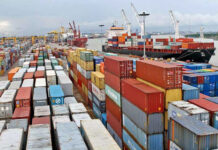Prime Minister Sheikh Hasina inaugurated the country’s largest 1,320 MW Payra thermal power plant on Monday (21 March) and announced that 100% of the country’s population will have access to electricity. By launching coal-fired power plants with the help of environmentally friendly ultra-supercritical technology, Bangladesh has achieved another milestone by implementing the government’s commitment to bring the country under 100% electricity in the ‘Mujib Barsha’.
This is the first in-person inauguration of the Prime Minister after the COVID-19 pandemic brought the entire world, including Bangladesh, to a halt.
The 1320 MW Payra power plant has been constructed on 1,000 acres of land along the Ramnabad River in Kalapara upazila of South Patuakhali district at a cost of 2.48 billion US dollars. And through this project, Bangladesh has become the 13th country in the world to use ultra-supercritical technology in power generation.
The first 660 MW unit of the power plant was commercially commissioned in May 2020, using 400 kV Payra-Gopalganj power transmission and the second started production in December 2021.
In addition to the 1,320 MW thermal power plant, another power plant is under construction and the government has plans to build another 1,320 MW power plant and a solar system power plant at Payra.
The plant is being built by Bangladesh China Power Company (BCPCL), a 50:50 joint venture between China National Machinery Import and Export Corporation (CMC) and Bangladesh’s state-owned North-West Power Generation Company Limited (NWPGCL).
Bangladesh-China Power Company (Pvt.) Limited, and a consortium of NEPC and CECC signed the EPC agreement on 29 March 2016 to implement the 1320 MW Payra thermal power plant project as soon as possible.
According to the World Bank, Bangladesh has now overtaken India and Pakistan, the countries in South Asia that have provided 98% of their population and 74% of their population with electricity respectively.
Power generation capacity increased to 25,514 MW in February 2022 from 4,942 MW in January 2009. Of this, 1160 MW is being imported and 19,626 MW is being generated locally.
In 2009, only 47% of the population had access to electricity. Per capita power generation has increased from 220 kWh to 560 kWh and the distribution loss of electricity has been reduced by 5.85%




